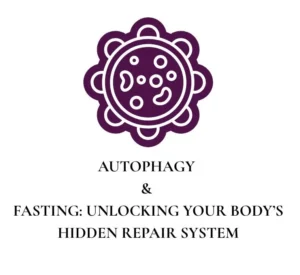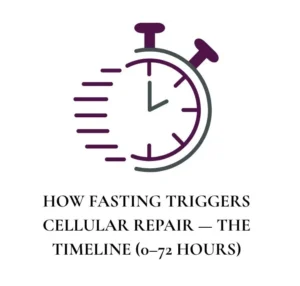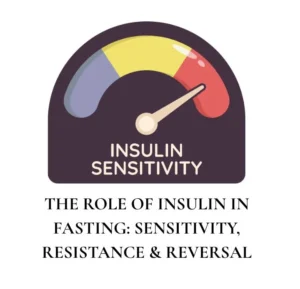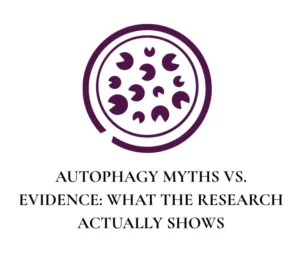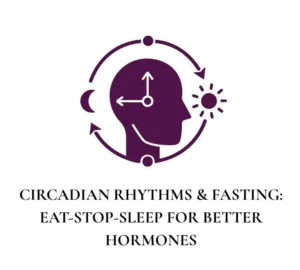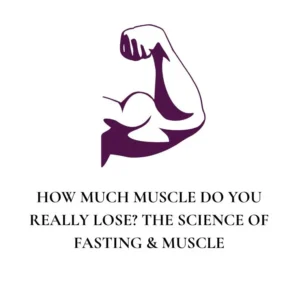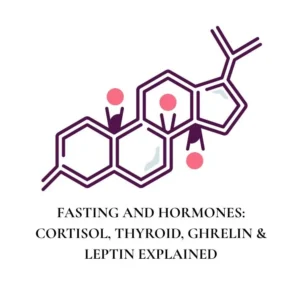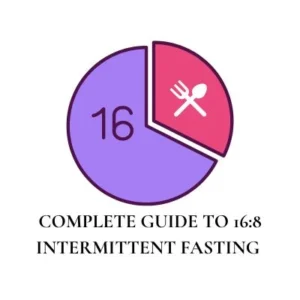We’re taught that the body runs on sugar. Eat bread, rice, fruit, pasta, and the body converts it to glucose (blood sugar), which fuels muscles and the brain.
But that’s not the full story.
Table of Contents
ToggleOur ancestors did not have three meals and snacks every day.
They often went hours or days without food. If the body only ran on glucose, humanity would not have survived.
So, nature gave us a second fuel: ketones.
These are molecules made by the liver when it burns fat.
They can power the brain, muscles, and even the heart with steady energy.
👉 Metabolic switching is the body’s elegant ability to move between glucose and ketones — like shifting gears in a car.
The problem? In the modern world of constant eating and high-carb diets, most people are stuck in glucose mode.
Their “gearbox” is rusty. They rarely, if ever, switch into ketones.
That’s why fatigue, cravings, brain fog, and stubborn weight are everywhere.
The solution: relearning the art of switching fuels.
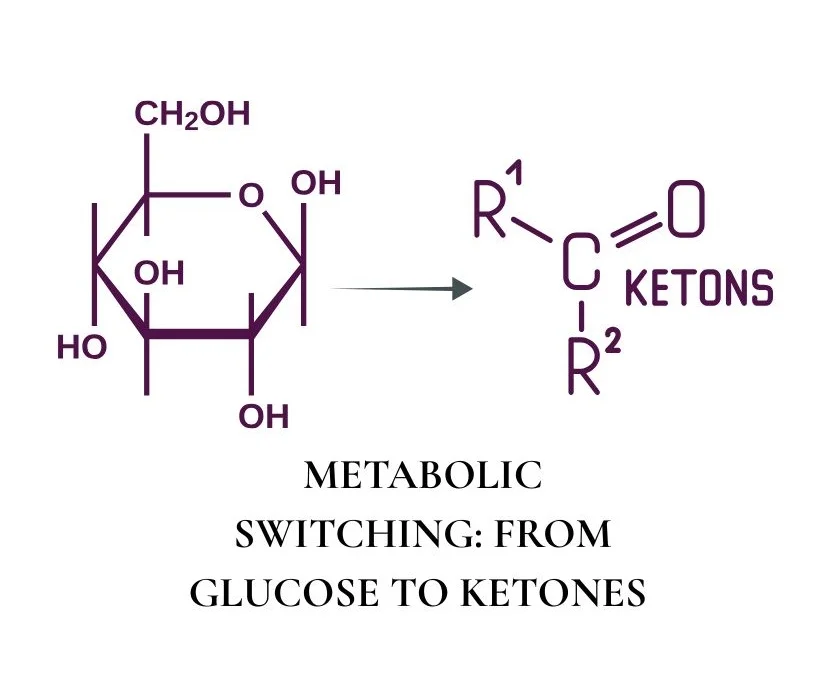
WHAT IS METABOLIC SWITCHING?
Metabolic switching means transitioning between:
- Glucose metabolism (sugar-burning):
- Primary fuel when eating carbs.
- Quick and efficient but short-term.
- Relies on insulin (a hormone that helps glucose enter cells).
- Stored as glycogen in liver and muscle (limited ~24 hours).
- Ketone metabolism (fat-burning):
- Backup fuel made from fat when glucose is scarce.
- Slower to activate, but steady and long-lasting.
- Provides fuel during fasting or low-carb diets.
- Powers the brain with molecules like beta-hydroxybutyrate (BHB).
👉 Think of glucose like fast food delivery — quick but limited.
👉 Think of ketones like a home garden — slower to grow but sustainable.
Metabolic switching is the ability to use both smoothly, depending on availability.
WHY METABOLIC SWITCHING MATTERS
When your body can switch fuels gracefully, it unlocks powerful health benefits:
- Weight Loss & Fat Burning
- In glucose mode, insulin is high, locking fat in storage.
- In ketone mode, insulin drops → fat is released and burned.
- Stable Energy & Mental Clarity
- Glucose metabolism causes energy spikes and crashes.
- Ketones provide steady energy, especially for the brain.
- Longevity & Cellular Repair
- Ketones activate repair pathways (like autophagy, cellular recycling).
- They reduce oxidative stress (damage caused by free radicals).
- Metabolic Flexibility
- A flexible metabolism adapts to feast and famine easily.
- Less risk of obesity, diabetes, and chronic disease.
THE TIMELINE OF METABOLIC SWITCHING DURING FASTING (0–72 Hours)
Let’s walk through the hour-by-hour journey of how your body transitions:
0–6 Hours: The Fed State
- Food is being digested.
- Glucose and insulin are high.
- Liver and muscles store glycogen.
- The body is in “growth mode” (mTOR active).
👉 No fat burning or ketones yet.
6–12 Hours: Early Transition
- Glucose begins dropping.
- Insulin levels fall.
- Glycogen (stored sugar in liver) supplies energy.
- AMPK (energy sensor) activates slightly.
👉 Still mostly glucose, but fat is starting to unlock.
12–16 Hours: First Signs of Ketones
- Liver glycogen nearly depleted.
- Fat cells release fatty acids.
- Liver begins making ketones.
- Low-level autophagy may begin.
👉 This is the metabolic switch point for many people.
16–24 Hours: Ketosis Established
- Ketones rise in blood.
- Brain uses ketones for up to 25% of fuel.
- Insulin is low, fat burning steady.
- Migrating Motor Complex (gut’s self-cleaning wave) active.
👉 Hunger often fades, clarity rises.
24–48 Hours: Deep Ketosis & Repair
- Ketones become the primary fuel.
- Autophagy ramps up — damaged cells recycled.
- Inflammation markers decrease.
- Growth hormone increases (protects muscle, burns fat).
👉 Cellular repair is strong here.
48–72 Hours: Peak Ketosis & Immune Reset
- Ketones dominate metabolism.
- Old immune cells broken down → stem cells signal regeneration.
- Mitochondria (cellular batteries) are renewed (mitophagy).
- Brain-derived neurotrophic factor (BDNF) rises → supports brain health.
👉 Profound clarity, reduced pain, sense of renewal.
SIGNS YOU’VE SWITCHED FROM GLUCOSE TO KETONES
Not everyone feels the switch the same way. Common signs include:
- Hunger reduces.
- Steady, calm energy (instead of crashes).
- Mental clarity or focus.
- Metallic taste in mouth (ketones).
- Increased urination (early ketone excretion).
TRAINING YOUR BODY TO SWITCH EASIER
Modern lifestyles make switching slow and uncomfortable. You can train your metabolism:
Practice Intermittent Fasting (16:8, 18:6)
- Daily windows strengthen insulin sensitivity.
Reduce Refined Carbs & Sugar
- Low-carb eating lowers glycogen faster.
Exercise in a Fasted State
- Burns glycogen → accelerates ketone production.
Stay Hydrated & Balance Electrolytes
- Prevents headaches, fatigue during transition.
Occasional 24–48 Hour Fasts
- Deeper training for metabolic flexibility.
THE SCIENCE BEHIND THE SWITCH
- Insulin drops → fat is released.
- AMPK rises → triggers energy conservation + repair.
- mTOR suppressed → growth paused, repair begins.
- Ketones rise → act as both fuel and signaling molecules.
- Autophagy activated → damaged parts recycled.
HEALTH CONDITIONS IMPROVED BY METABOLIC SWITCHING
- Type 2 Diabetes → lowers insulin resistance.
- Obesity → burns visceral (belly) fat.
- Brain Disorders → ketones support neurons (Alzheimer’s, epilepsy).
- Heart Health → lower triglycerides, higher HDL.
- Cancer Research → fasting stresses cancer cells (still being studied).
RISKS & WHO SHOULD BE CAREFUL
Not everyone should attempt fasting for metabolic switching:
- Pregnant/breastfeeding women.
- Children.
- People with eating disorders.
- Those on insulin or certain medications.
- Individuals with chronic illness (without medical supervision).
👉 Always consult before extended fasts.
Frequently Asked Questions
Q: How long does it take to switch?
- Most people switch between 12–24 hours, depending on diet and activity.
Q: Does keto diet help?
- Yes, it trains the body to use ketones faster. But fasting alone also works.
Q: Can I drink coffee?
- Black coffee/green tea usually support the switch; sugar or milk delay it.
Q: Do ketones mean autophagy?
- They often overlap, but ketosis = fuel change, autophagy = repair.
Q: Can I feel the switch?
- Many people notice clarity and reduced hunger. Others feel it subtly.
Closing Thought: Rediscovering the Forgotten Switch
Metabolic switching is not new.
It’s how humans survived — moving between glucose when food was abundant and ketones when it wasn’t.
When you train your body to switch again, you gain freedom:
- Freedom from sugar crashes.
- Freedom from cravings.
- Freedom from disease risk.
Fasting is not deprivation. It is restoration — a way of remembering the ancient flexibility your body was designed for.
And if you’re unsure how to begin, or worried about safety, guidance makes the journey easier.
With the right support, metabolic switching transforms from struggle into healing — helping you reclaim energy, clarity, and health.

